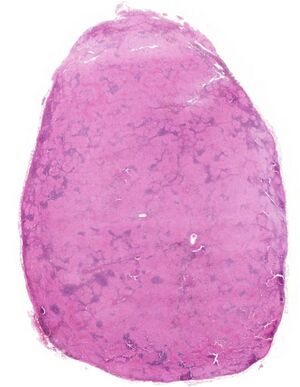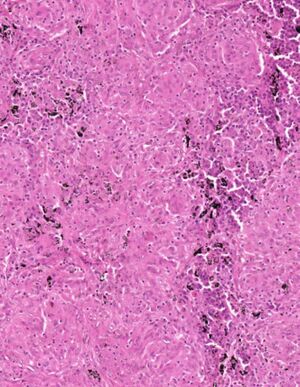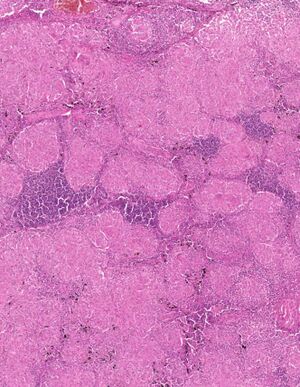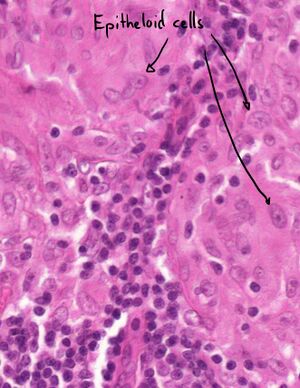29. Sarcoidosis in lymph node
Staining: HE
Organ: Lymph node
Description:
The whole slide is made up of mainly eosinophilic parts, with some basophilic tissue in between. Black pigment can be seen in some regions.
Diagnosis: Sarcoidosis
Causes:
- Unknown cause
Theory:
See also macropreparation 32 and slide 30.
The basophilic tissue is the remnant on the normal lymphoid tissue that lymph nodes are comprised of. The eosinophilic rest of the slide is made up of granulomas. These granulomas are “hard” because they have no necrotic centre.
Not many giant cells can be seen. These granulomas are mostly made up of epithelioid cells.
We can know that this lymph node is from the lung because we can see anthracosis.




